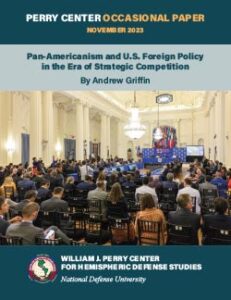This paper traces the evolution of Pan-Americanism and the inter-American system over periods marked by initial attempts inspired by the competing visions of James Monroe and Simón Bolívar (1823-1889); U.S. efforts to place Pan- Americanism into service to advance its political aim of preeminence in a peaceful and prosperous hemisphere (1889-1923); peak cooperation caused by a shift in U.S. tone and tactics (1923-1945); the establishment of the OAS, fallout from U.S. actions during the Cold War, and the U.S. attempt to reset its relationship to the region (1945-1990); and optimism regarding the potential for regional integration giving way to disillusionment and disagreement over the best way to address democratic backsliding (1990-2023).

